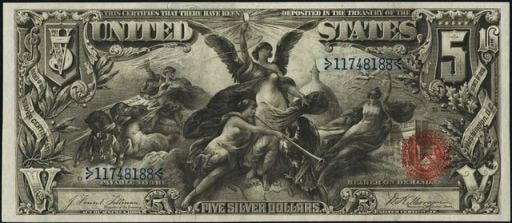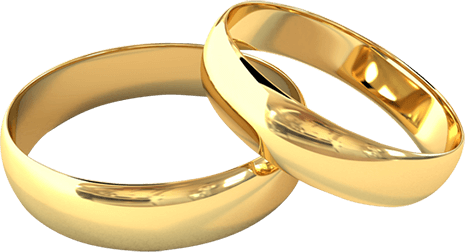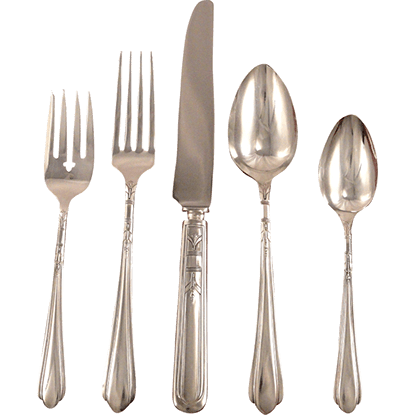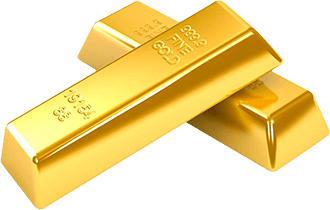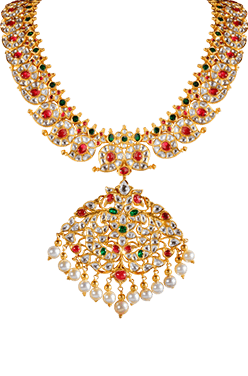Silver Certificates
Values, Information, & Sales
When most people talk about silver certificates they probably think back to $1 1957 silver certificates. However, the United States started issuing silver certificates as early as 1878. Silver certificate has kind of taken on a term to describe any old U.S. bill. Of course only some notes actually are silver certificates. Click on your denomination below to learn more about that note.
So let’s talk about the common ones first. Any silver certificate from 1957 or 1935 is extremely common. That also goes for any combination of letters like 1957B or 1935F. They are all worth around $1.50 in circulated condition and about $5 in perfect condition. These can be bought by the 100s at shows or coin shops. They are no where near rare enough to be collectible. The small premium they do command is just a result of the curiosity factor.

Any 1934 and any 1953 $5 silver certificate with a blue seal is very common. I sell them for $7 in circulated condition. There are some rare star notes from those years. The 1953B star and some 1934 stars are rare. The star symbol would be located at the beginning of the serial number. If a letter begins and ends the serial number, then that is considered a regular issue.

The ten dollar bill is the only other small size denomination printed as a silver certificate. Tens were printed for 1933, 1934, and 1953. The 1933 example is by far the rarest. The other years typically sell for around $15 in circulated condition. Once again, star notes and low serial numbers have a chance to be more valuable. A low serial number on a silver certificate is typically defined as being under 100.

Large size silver certificates were first printed in 1878. Any note from 1878 or 1880 should considered to be scarce. The next line of silver certificates were issued in 1886. These are available, but you still don’t see them especially frequently.
1891, 1896, and 1899 silver certificates were printed in large numbers. For the most part, 1891 notes look similar to earlier issues. However, the 1896 and 1899 types are distinctive. The 1896 series is famously known as the educational series. The 1899 line of silver certificates present opportunities to own a black eagle, mini-porthole, or a chief.
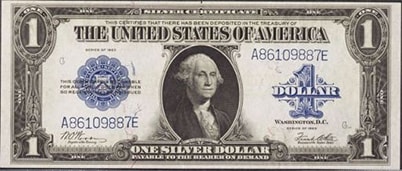
Oddly enough, the 20th century saw the issuance of large size silver certificates in just two years, 1908 and 1923. The 1908 example is a fairly tough $10 note. One and five dollar bills were printed for 1923. The $1 bill is exceptionally common and worth around $15 on average. The $5 bill from 1923 is fairly tough, and usually worth at least a few hundred dollars.
I would be happy to help answer any questions you might have about your silver certificate. I am also interested in buying different, rare, or high grade notes of any denomination and type.
FREE APPRAISAL
STEP ONE: FILL OUT THE FORM BELOW
SIX CONVENIENT STORES
FIVE STAR-RATED
NEW ADRESS
Roosevelt Field Mall
(NEXT DOOR TO RED LOBSTER, IN-FRONT OF THE ROOSEVELT FIELD MALL)
HOURS:
MONDAY
10:00 AM – 8:00 PM
TUESDAY
10:00 AM – 8:00 PM
WEDNESDAY
10:00 AM – 8:00 PM
THURSDAY
10:00 AM – 8:00 PM
FRIDAY
10:00 AM – 8:00 PM
SATURDAY
10:00 AM – 8:00 PM
SUNDAY
11:00 AM – 6:00 PM
| HOURS: | |
| MONDAY | 10:00 AM – 8:00 PM |
| TUESDAY | 10:00 AM – 8:00 PM |
| WEDNESDAY | 10:00 AM – 8:00 PM |
| THURSDAY | 10:00 AM – 8:00 PM |
| FRIDAY | 10:00 AM – 8:00 PM |
| SATURDAY | 10:00 AM – 8:00 PM |
| SUNDAY | 11:00 AM – 6:00 PM |
![[Most Recent Quotes from www.kitco.com]](https://www.kitconet.com/images/quotes_2a.gif)
